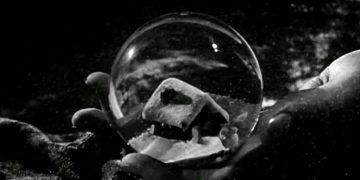On March 22, 1895, Auguste and Louis Lumière stood before the assembled audience members of the Society for the Development of the National Industry in Paris, France.
They debuted a new photographic technology that allowed photos to be taken at a rate of 16 photos per second. When those images were then projected at the same rate, it gave the illusion of movement: men and women walking in and out of a factory.
That was the first recorded demonstration of projected film in history. On December 28, 1895—later that same year—the brothers showed their creation to a paying audience of around 40 people.
While the Lumières weren't the first people to invent the concept of moving images, they ignited the spread of it. On that fateful day, in showing their film to a public audience, they marked a milestone in history that has come to be known as the day cinema was invented.
But who were the Lumière brothers? What was that first film ever shown to the public? And as cinema took hold, what was the first feature-length film ever produced? What was the first film with color? With sound?
Let's dive into the very beginnings of cinema, the credited inventors of the artform, and then various cinematic firsts.
Who Were Auguste and Louis Lumière?

Auguste and Louis Lumière were NOT the first people to invent a cinematographic camera, nor were they the first ones to come up with the concept of perforations in film.
However, much like Henry Ford with his Model T, the Lumières' cinematographic camera system WAS the first successful example of a camera that put all of the pieces together. It was the system that future cinema cameras were based upon. It was the nexus point.
By 1905, after touring their system around the world, Auguste and Louis left the film business as they saw it as no more than frivolity.
So, funny enough, the founders of modern cinema ended up having little involvement in the future of films, even after their tiny box had such a profound impact upon the world's entertainment artforms.
The people who witnessed their unveiling on that cold December day in 1895 may not have suspected that moment to be so important to human culture, but they were indeed—each of them—the first pioneers.
What Was the First Feature-Length Film?
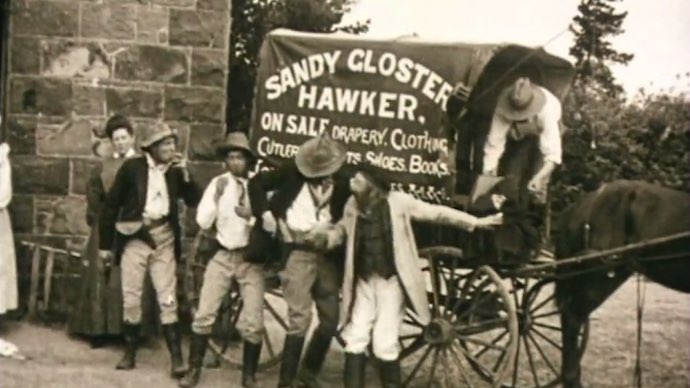
The first feature-length film is often erroneously credited to D.W. Griffith's horribly racist The Birth of a Nation in 1915. Yet despite the incredible techniques Griffith used in the film, it's not the true first.
In fact, the first feature-length film didn't hail from Hollywood or even America at all. Instead, it came from Australia. In 1906, Charles Tait—a mere 11 years after Auguste and Louis debuted their machine to the world—created The Story of the Kelly Gang.
Most of the details surrounding the film have since been lost to time, but around 15 minutes of it survived and are available on YouTube.
What Was the First Color Film?
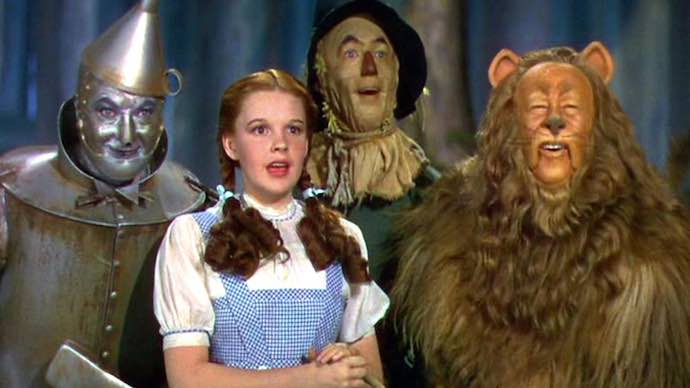
Honestly, there's no definitive answer to this question, as it really depends on what one means by the term "color."
The first films to use color pre-date the existence of feature-length films, as many of the first short-film-makers used techniques to colorize their projects, such as hand-painting the frames individually.
That was the case with Annabelle Serpentine Dance from 1895, which used The Edison Company's camera technology.
And if "color" means the ability to shoot films in color, many of those early films are now lost or extinct, plunging the answer into mystery.
The salient thing to remember is this: the first color film was NOT The Wizard of Oz in 1939, despite many people believing it to be.
What Was the First Film With Sound?
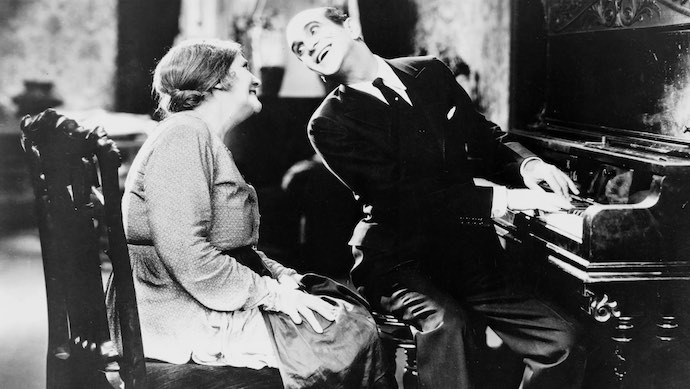
Here's one with a definitive answer! In 1927, the film The Jazz Singer became the first feature-length film to use recorded sound in conjunction with its images. In other words, the characters spoke to one another in clear audio dialogue for the first time.
Of course, there are other examples of recorded sound in cinema before The Jazz Singer, but those are mainly limited to the musical score and accompanying sound effects without audio dialogue.
The release of The Jazz Singer initiated the decline of the silent film era, as audiences wanted their screen heroes and heroines to talk.
Which Film Was the First to Win an Academy Award for Best Picture?
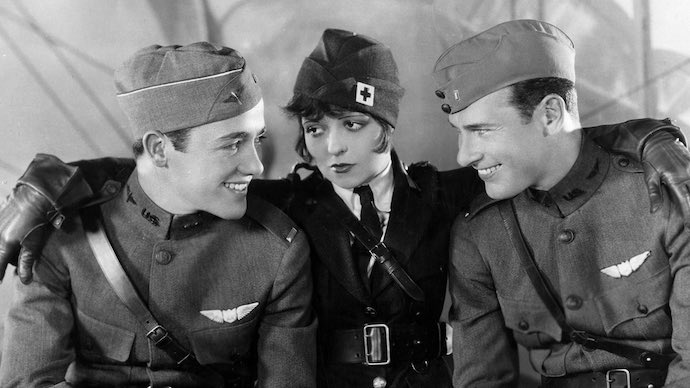
The first Academy Awards ceremony was held in the Roosevelt Hotel in Hollywood on May 16, 1929. It was hosted by Douglas Fairbanks, and the ceremony took place over the road from where the Dolby Theatre now stands (which hosts the Oscars every year).
On that Thursday, three films found themselves nominated for Best Picture: 7th Heaven, The Racket, and Wings. Of those three, it was Wings that brought home the first Academy Award—and since then, 93 films have shared that honor on Oscar night.
The funny thing about the Academy Awards is that creator Louis B. Mayer thought it was a good idea because he felt it made filmmakers easier to handle by "hanging medals all over them."
In other words, the first Academy Awards ceremony was essentially born from Louis B. Mayer wanting to control his filmmakers.
Which Film Was the First to Earn $1 Billion at the Box Office?
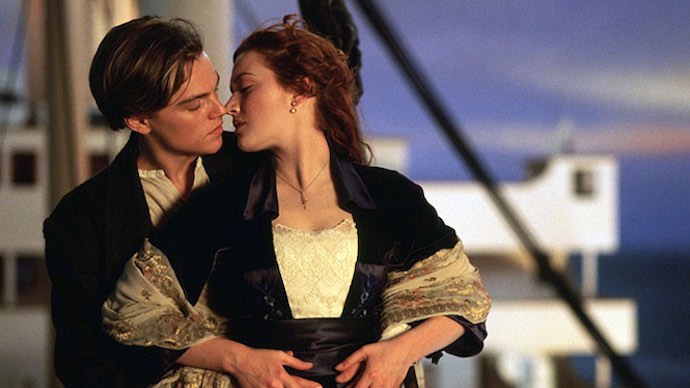
In March 1998—a whopping 103 years since Auguste and Louis had publicly showcased their movies before an audience—Titanic became the first film to earn $1 billion dollars at the international box office.
However, there's a caveat to this number once you account for inflation. In terms of inflation-adjusted dollars, many earlier films actually made more money on initial release than Titanic.
Indeed, films like Gone With the Wind, Star Wars, and Jurassic Park had already banked over a billion dollars when accounting for real monetary value. But by sheer dollar count, it's still Titanic.
After Titanic achieved that feat (largely due to its extended stay in theaters), it gave rise to the looming 21st century, in which over 45 movies have now achieved the feat of crossing the $1 billion mark.

